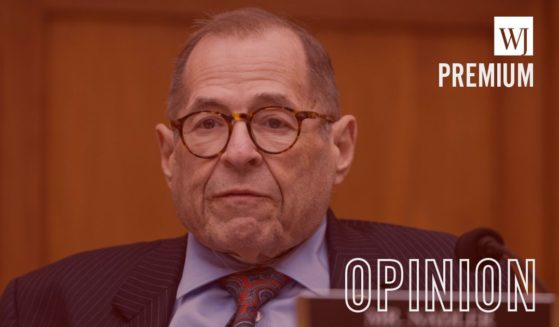
Alarming Paper Concludes Almost Half of Shutdown-Induced Layoffs Will Be Permanent
Many of the jobs left behind when the nation locked down in March to fight the coronavirus will never return, according to a new study.
A paper published this month by the National Bureau of Economic Research titled “COVID-19 Is Also a Reallocation Shock” — authored by Jose Maria Barrero, Nicholas Bloom and Steven J. Davis — estimated that “42 percent of recent layoffs will result in permanent job loss.”
The survey also provided a bleak look ahead at how policymakers are responding, saying: “Unemployment benefit levels that exceed worker earnings, policies that subsidize employee retention, occupational licensing restrictions, and regulatory barriers to business formation will impede reallocation responses to the COVID-19 shock.”
The paper said survival will go the nimble who can change careers, because as some sectors of the economy are shrinking, others are growing.
“[T]he COVID-19 shock caused 3 new hires in the near term for every 10 layoffs. These sizable new hires amidst a tremendous overall contraction align well with our anecdotal evidence of large pandemic-induced increases in demand at certain firms,” the study said.
The paper noted that based on statistics, “spending on airlines, hotels, rental cars, taxis, ride sharing and movie theaters is down 75-95 percent relative to spending in 2019.”
It added: “Spending on fast food, auto parts, and autos is down 35 percent, and spending on apparel is down 70 percent. At the same time, spending on home improvement, video streaming, gaming, food delivery, meal kits, and online grocers has boomed.”
The changes to the economy will not fade quickly, the paper said.
“Even if medical advances or natural forces bring an early resolution to the crisis, many pandemic-induced shifts in consumer demand and business practices will persist,” the authors wrote.
“If the pandemic and partial economic shutdown linger for many months, or if pandemics with serious health consequences and high mortality rates become a recurring phenomenon, there will be profound, long-term consequences for the reallocation of jobs, workers and capital across firms and locations,” they added.
The paper said that ending all restrictions tomorrow will not magically return the economy to what it was.
“Under an optimistic scenario, the pandemic recedes in the coming weeks, COVID-19 treatments improve, an effective vaccine becomes available and widely deployed in 12-18 months, and the economy gradually comes back on line over the next 2-3 months without serious setbacks,” it said.
“Even in this scenario, we see several reasons to anticipate a lengthy recovery. U.S. real GDP may not surpass its 2019 level until the latter half of 2021 or later, and the return path to full employment is likely to take even longer.”
“Even with a vaccine in hand, consumer and business spending won’t fully revert to pre-pandemic patterns. Concerns about infectious disease will linger. Millions of households are learning how to purchase almost anything online, and many will stick with it. Business people are learning how to travel less. Much of the shift in spending patterns and business practices will persist.”
But the paper noted that the longer that lockdowns last, the worse job losses will become.
“The longer it takes to bring the economy back on line, the larger the fraction of recent layoffs that will turn out to be permanent,” it said.
The paper argued that policies that try to bring back what is gone will only hurt the economy.
“[P]olicy efforts to preserve all pre-COVID jobs and employment relationships could prove quite costly, if pursued. They are analogous to policies that prop up dying industries and failing firms. These policies are feasible, but the cost is high in terms of resource misallocation and taxpayer burden,” the study’s authors wrote.
“Second, there are potentially large benefits of policies and policy reforms that facilitate a speedy reallocation of jobs, workers, and capital to newly productive uses in the wake of the pandemic. Policies that deter or slow factor reallocation are likely to further lengthen the lag of creation behind destruction, slowing the overall recovery from the pandemic, the lockdown, and the pandemic-induced reallocation shock.”
The paper said that raising unemployment benefits has the side effect of encouraging employers to cut jobs because workers will be able to get by on supplemental benefits and because high unemployment benefits are proven to discourage people receiving them from looking for work.
Further, the paper argued that linking government aid to employers to retention of jobs is short-sighted because it will support businesses that are only able to succeed because of government aid.
Truth and Accuracy
We are committed to truth and accuracy in all of our journalism. Read our editorial standards.
Advertise with The Western Journal and reach millions of highly engaged readers, while supporting our work. Advertise Today.












